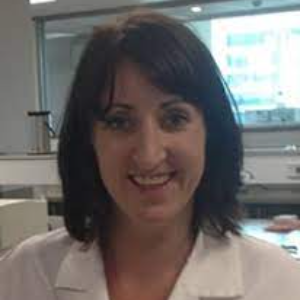Title : Understanding the Impact of nanoparticle structure on cellular response
Abstract:
Nanoparticle delivery systems have potential for biomedical applications due to the ability of the nanoparticles to better target diseased cells or tissue, and therefore optimise the therapeutic payload to a treatment site. Self- assembled polymeric carriers have generated particular attention for delivery applications due to their simple and versatile synthesis. However, such carriers are still limited by inefficient delivery to target regions within the cell. Therefore, there is still a need to better understand their cellular response. Recently, our research group developed pH responsive nanoparticles that could be used as a model to investigate targeting, internalisation and the trafficking of the nanoparticles into the cytosol. One of the key bottlenecks of interest in our work is escape of the polymeric carrier from acidic, cellular compartments (lysosomes/endosomes) into the cytosol, referred to as endosomal escape. PH responsive materials have shown potential for endosomal escape but the mechanisms for this response are still unclear. One interesting pH responsive polymer is poly(2-(diethylamino)ethyl methacrylate) (PDEAEMA) as it undergoes a transition from hydrophobic to hydrophilic in a pH range consistent with endosomal compartments.
In this presentation, the synthesis of pH responsive nanoparticles based on (2-(diethylamino)ethyl methacrylate and related monomers will be reported. PDEAEMA particles (pHlexi particles) were assembled using a simple one-pot synthesis approach and demonstrated rapid pH disassembly when the pH was decreased. A library of nanoparticles with different pH of disassembly were synthesised and the effect on hemolysis, internalisation and endosomal escape investigated. Interestingly, high endosomal escape was observed for nanoparticles at the extremes of the pH disassembly range (pH 5 and pH 7.2) with low amounts of escape at intermediate pH. In addition, a fluorescent internalisation probe was used to investigate the internalisation kinetics of these nanoparticles. The relationship of internalisation to association kinetics was found to be highly dependent on cell line. The responsive and modular nature of these materials provides new insights into the design of nanoengineered materials for application in therapeutic delivery.
Audience take away:
• Demonstrate the simple and versatile synthesis of pH responsive nanoparticles.
• Show how endosomal escape can be engineered by changing composition of polymer building blocks.
• Demonstrate the use of an internalisation sensor to probe internalisation and internalisation pathways.
• This talk provides important insights into how particle engineering can play a significant role in cellular trafficking, factors that should be considered for applications that require delivery of biological therapeutics.



